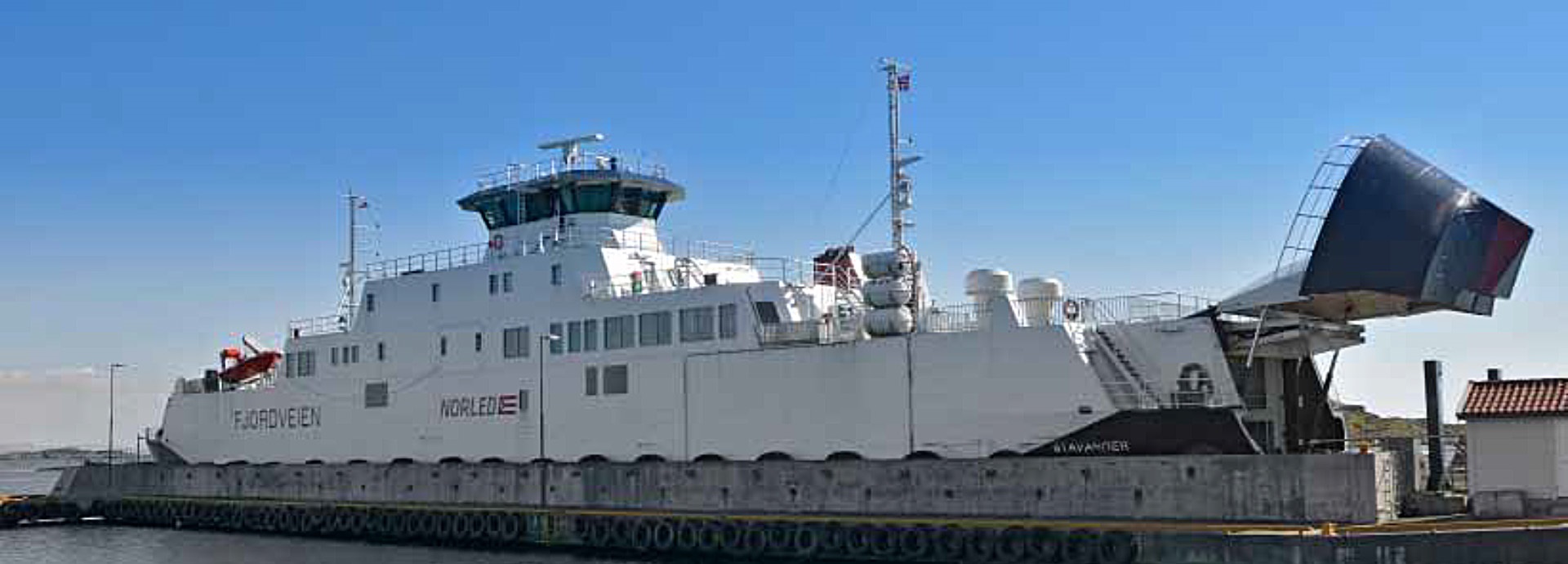

LowNOx conversion reduces NOx taxes for the Fjordveien ferry
A major overhaul of Norled AS’s Fjordveien ferry engines was imminent. With support from the Norwegian NOx Fund, the company decided to use the opportunity to invest in a LowNOx conversion at the same time. This conversion not only enhances Norled’s image as a green company, but generates revenue in terms of significantly reduced NOx taxes.
Challenge
- Helping the customer to comply with the Norwegian NOx emissions reduction targets
- Reducing the NOx taxes the customer must pay to the NOx Fund
Solution
- LowNOx conversion of the vessel’s four Wärtsilä 6L20 engines, including conversion engineering, related spare parts and installation work
Benefit
- Decreased NOx emissions by approximately 18%
- Reduction of NOx taxes, amounting to approximately NOK 55,000 per year
Stavanger-based Norled AS, founded in the 1850s, is one of Norway’s largest ferry and express boat operators, operating some 80 ferries and express boats. Recently, the company has significantly invested in new types of vessels and eco-friendly technology. Norled AS has over 1,000 employees, an annual turnover of NOK 2 billion and is a wholly-owned subsidiary of Det Stavangerske Dampskibsselskap AS.
The Fjordveien ferry is vitally important for those living on the island of Kvitsøy as it is the only connection for cars, supplies and passengers to Mekjarvik on the mainland. From time to time during the winter, the 40-minute journey is made
in rather rough seas. The ferry connection is vital for the inhabitants and the companies on the island. Until the planned underwater tunnel to the island is ready, they are dependent on the ferry, says Mr. Marwoll.
LowNOx conversion – an easy choice
For Norled, it is important to be known as an environmentally-aware company. DNV has already issued a certificate stating that Norled is a green company in terms of environmental issues.
The LowNOx conversion was made according to our environmental
policy. Since the Fjordveien was up for a major overhaul of its four Wärtsilä 6L20 engines (60,000 hours), the decision to make a LowNOx conversion at the same time was fairly easy to decide. The conversion only required a few extra spare
parts in addition to the extensive overhaul the engines were due for.
Wärtsilä supplied a tailor-made solution for Norled, covering the design and engineering, spare parts, and the installation of the LowNOx conversion. The decision
to make the installation at the same time as the engines were overhauled was based on the fact that a large number of parts would have been up for change anyway. Combining these two projects was both time and cost effective for the customer, especially
from a manpower perspective.
NOx emissions lower than expected
The conversion lasted 18 days and was completed according to schedule. There were hardly any challenges during the conversion. No more than can be expected during a project of this type. Everything went very well, says Mr. Marwoll. He further adds that
both Wärtsilä’s people in charge and the workers on-board conducted the conversion in a good and professional way. He visited the site many times during the project and admits that he was impressed: They were very good. We had excellent
cooperation with Wärtsilä before, during, as well as after the conversion.
The Fjordveien ferry has now been in service again for some time and the experiences with the LowNOx conversion are remarkable. Engine performance as such
has not improved noticeably, but that was not expected either. An external company was assigned to take some measurements onboard and the results showed significantly lower NOx levels than before (approximately 18%). So, the LowNOx conversion was
a success resulting in NOx emissions below the expected.
Significant savings in reduced NOx taxes
In Norway, there is a system with a so-called NOx Fund, where companies pay a NOx tax according to NOx outlet. Companies can apply for national grants from the NOx Fund in proportion to the amount of NOx reduction that can be presented for new buildings
and modifications, limited to 80% of the total cost for new buildings/modifications. The introduction of the NOx tax was motivated by the need for Norway to quickly achieve additional NOx reductions to meet set emission targets. Through an agreement
between the Norwegian government and business organisations, the tax was transformed into a fund for investments. Participants in the NOx Fund can apply for grants to finance NOx abatement measures.
NOx taxes are also applicable for the
Fjordveien ferry, meaning that they need to pay taxes to the NOx Fund based on the emissions. According to Mr. Marwoll, Norled has gained some important benefits through this conversion. The engines are now converted and the vessel has become more
environmentally friendly.
With lower NOx emissions, we save the environment from pollution and also some money for the company. We estimate a yearly reduction of approximately 12,000 tons of NOx, which in our case translates into a rebate
of approximately NOK 250 per kilo. So, this was a major factor influencing our decision to do a LowNOx conversion. The LowNOx conversion of the Fjordveien ferry supports Norled’s ambition to achieve the goal of being a green company.
We can so far only see good environmental benefits, so we recommend other ship operators and owners to do the same type of LowNOx conversion, says Mr. Einar Marwoll.
We estimate a yearly NOx reduction of more than 12,000 tons. For us that means we can apply for a payback of approximately NOK 250 per kilo reduction in NOx, limited to 80% of the cost for modification, from the NOx Fund.


